Organic food has become a global buzzword. Supermarkets proudly showcase it, restaurants feature it on menus, and health-conscious consumers often swear by it. But behind the green labels and eco-friendly packaging, what does “organic” actually mean?
Is organic food really healthier, safer, or more sustainable? Or is it just a clever marketing tactic that makes us feel better about what we’re buying?
This comprehensive beginner’s guide will walk you through everything you need to know: the definition of organic food, how it’s different from conventional options, the global certification standards, its potential benefits, and practical tips on when and how to choose organic.
By the end, you’ll have a clear understanding of whether organic food deserves a place in your shopping cart — and how to make smarter, more informed choices.
What Does “Organic” Really Mean?
At its simplest, organic food is food grown and produced without synthetic chemicals, GMOs, or artificial additives. But the real meaning runs much deeper, encompassing farming practices, animal welfare, and environmental sustainability.
Core Principles of Organic Farming
- No Synthetic Chemicals
Organic farmers avoid synthetic pesticides, herbicides, and fertilizers. Instead, they rely on natural alternatives such as compost, crop rotation, and beneficial insects. - No Genetically Modified Organisms (GMOs)
GMOs are strictly prohibited. Crops must be naturally developed and bred without genetic engineering. - Animal Welfare Standards
Animals raised organically must have access to outdoor space, organic feed, and cannot be given growth hormones or routine antibiotics. - Minimal Processing
Organic packaged foods must be processed without artificial preservatives, colors, or flavor enhancers.
In short, organic isn’t just about the absence of chemicals — it’s about a holistic, nature-based approach to food production.
Organic vs. Conventional Food
The most common question consumers have is: what’s the difference between organic and conventional food?
Conventional Farming
- Uses synthetic fertilizers to maximize yield.
- Relies on chemical pesticides and herbicides to control pests and weeds.
- Often involves monocropping (planting one crop repeatedly), which depletes soil nutrients.
- Employs GMOs for disease resistance and faster growth.
- Livestock are often confined and may receive routine antibiotics and hormones.
Organic Farming
- Relies on natural soil enrichment methods (compost, cover crops, crop rotation).
- Uses biological pest control such as introducing predator insects or natural sprays.
- Encourages biodiversity, often planting multiple crops together.
- Prohibits GMOs completely.
- Requires animal welfare standards like outdoor access and organic feed.
Which Is Better?
- For the environment: Organic farming generally produces less pollution and supports biodiversity.
- For health: Organic reduces pesticide exposure and often avoids controversial additives.
- For cost and yield: Conventional farming produces more food at lower cost but at higher ecological impact.
Organic Certifications Around the World
Not everything labeled “organic” truly meets the standard. That’s why certifications are critical. They ensure that food follows strict guidelines before it can be called organic.
USDA Organic (United States)
- At least 95% of ingredients must be organic.
- Prohibits synthetic pesticides, GMOs, and artificial preservatives.
- Livestock must be raised humanely and without growth hormones.
EU Organic (European Union)
- Strict ban on GMOs.
- Limited pesticide use, with strong soil and crop rotation requirements.
- Strong emphasis on animal welfare and eco-friendly farming.
Other Notable Standards
- Canada Organic → Overseen by the Canadian Food Inspection Agency.
- JAS (Japan Agricultural Standard) → Covers both domestic and imported foods.
- India Organic → Managed by the National Program for Organic Production.
- Australia Certified Organic (ACO) → Australia’s largest certifying body.
Note: Always look for certification seals rather than trusting vague marketing terms like “natural” or “eco-friendly.”
Benefits of Organic Food
People buy organic for different reasons — some for health, some for environmental concerns, and others for ethical values. Let’s explore each in detail, with supporting data.
1. Health Benefits
- Lower Pesticide Exposure
Multiple studies, including research published in Environmental Health Perspectives, confirm that people who eat mostly organic diets have significantly lower pesticide residues in their urine compared to those who eat conventionally. - Reduced Antibiotic & Hormone Use
Organic animal products come from livestock not treated with routine antibiotics or growth hormones. This reduces the risk of antibiotic-resistant bacteria entering the food chain. - Potentially Higher Antioxidant Levels
A large meta-analysis (2014, British Journal of Nutrition) found that organic crops contained 20–40% higher antioxidant concentrations than conventional crops. Antioxidants are linked to reduced risk of chronic diseases. - Lower Additives in Processed Foods
Organic packaged products avoid controversial additives like artificial dyes, MSG, and chemical preservatives.
2. Environmental Benefits
- Soil Health
Organic farming increases organic matter in soil, improving fertility and water retention. The Rodale Institute’s long-term study showed that organic soils retained 15–20% more water than conventionally farmed soils. - Reduced Water Pollution
Conventional farming chemicals often leach into rivers and groundwater. Organic practices reduce this risk, protecting aquatic ecosystems. - Lower Carbon Footprint
Some evidence suggests organic farming emits fewer greenhouse gases per hectare due to its reliance on renewable resources and avoidance of synthetic nitrogen fertilizers.
3. Ethical & Animal Welfare Benefits
- Better Living Conditions
Organic livestock standards mandate outdoor access, fresh air, and natural diets. This contrasts with industrial factory farming, where animals may live in confined spaces. - No Routine Drugging
Animals are not routinely given antibiotics or hormones, reducing both health risks and ethical concerns. - Respect for Natural Behaviors
Organic standards often encourage allowing animals to express natural behaviors — chickens can forage, cows can graze, etc.
Common Myths About Organic Food
Despite its growth, organic food is still misunderstood. Let’s address the most common myths with evidence.
Myth 1: Organic Food is Pesticide-Free
❌ False. Organic farmers can use approved natural pesticides (e.g., neem oil, pyrethrin). The difference is that synthetic chemical pesticides are prohibited, and usage is strictly regulated.
Myth 2: Organic Food is Always Healthier
❌ Not necessarily. Nutrition varies by crop, soil, and freshness. However, organic food offers less exposure to chemical residues and often higher antioxidant levels.
Myth 3: Organic Food Never Contains Additives
❌ Misleading. Some natural preservatives like ascorbic acid (Vitamin C) or citric acid are allowed. “Organic” doesn’t mean “ingredient-free” — it means no artificial chemical additives.
Myth 4: Organic Farming Can’t Feed the World
❌ The UN’s Food and Agriculture Organization (FAO) reports that while organic yields may be lower, adopting sustainable practices worldwide could feed populations if food waste is reduced and diets are diversified.
How to Identify Organic Food in Stores
Shopping for organics can be confusing because labels and claims vary widely. Here’s how to do it right:
1. Look for Certification Seals
- United States: USDA Organic seal (green/white).
- Europe: EU Organic Leaf symbol.
- Canada: Canada Organic logo.
- Other countries: Look for national organic marks (e.g., India Organic, Australian Certified Organic).
2. Understand Label Wording
- “100% Organic” → All ingredients are organic.
- “Organic” → At least 95% of ingredients are organic.
- “Made with Organic Ingredients” → 70% of ingredients are organic.
Note: Terms like “natural,” “eco-friendly,” or “clean” are not regulated — they don’t guarantee the product is organic.
3. Smart Shopping Tips
- Check the PLU Code: On produce stickers, a 5-digit code beginning with “9” means organic.
- Read Ingredient Lists: In packaged goods, make sure non-organic ingredients aren’t synthetic.
- Watch for Greenwashing: Some brands design eco-friendly packaging to look organic without certification.
Is Organic Food Worth It?
Organic food usually costs more, and for many shoppers the question becomes: is it really worth the price?
The answer depends on your priorities:
- Health-conscious families → worth it for reducing pesticide residues and limiting additives.
- Eco-conscious consumers → worth it for soil, water, and biodiversity benefits.
- Animal welfare advocates → worth it for better livestock treatment.
- Budget-conscious households → a mixed approach may be better (buy some organic, some conventional).
Price Comparison: Organic vs. Conventional
| Food Item | Conventional Price (avg.) | Organic Price (avg.) | Price Difference |
|---|---|---|---|
| Apples (per lb) | $1.80 | $2.60 | +44% |
| Milk (1 gallon) | $3.60 | $6.00 | +67% |
| Eggs (dozen) | $2.50 | $4.50 | +80% |
| Carrots (per lb) | $1.20 | $2.10 | +75% |
(Based on U.S. retail averages, 2024)
As you can see, organic can be significantly more expensive. This is why many families follow the “Dirty Dozen vs. Clean Fifteen” framework when shopping.
The Dirty Dozen & Clean Fifteen Framework
When it comes to organic food, one of the biggest questions is: What should I prioritize buying organic, and what’s safe to buy conventional?
The Environmental Working Group (EWG) helps answer this question each year by releasing two lists: the Dirty Dozen (produce most likely to have pesticide residues) and the Clean Fifteen (produce least likely to contain them).
These lists are based on USDA pesticide residue testing, where thousands of fruit and vegetable samples are washed, peeled, and tested to reflect how people typically consume them.
Why the Framework Matters
- Budget-Friendly → Not everyone can buy 100% organic. These lists let you prioritize.
- Health-Conscious → Reduces your exposure to the highest-risk produce.
- Family-Friendly → Particularly important for children, who are more vulnerable to pesticide effects.
- Science-Based → Updated annually with the latest residue testing data.
The Dirty Dozen: Buy These Organic
These fruits and vegetables tend to have multiple pesticide residues even after being washed or peeled. For this reason, they’re worth buying organic whenever possible:
- Strawberries
- Spinach
- Kale, Collard, and Mustard Greens
- Grapes
- Apples
- Peaches
- Cherries
- Pears
- Bell Peppers & Hot Peppers
- Celery
- Tomatoes
- Blueberries
Pro Tip: Soft-skinned fruits and leafy greens usually show up on this list because their surfaces absorb and retain pesticide residues more easily.
The Clean Fifteen: Conventional is Fine
These items usually test with little to no pesticide residues. Buying them conventionally can help you save money without much risk:
- Avocados
- Sweet Corn
- Pineapples
- Onions
- Papayas
- Sweet Peas
- Asparagus
- Honeydew Melons
- Kiwi
- Cabbage
- Mushrooms
- Mangoes
- Watermelon
- Carrots
- Sweet Potatoes
Pro Tip: Thick-skinned fruits (like avocados and melons) and produce with protective outer layers tend to make this list.
Things to Keep in Mind
- Not a Nutrition Ranking → Both Dirty Dozen and Clean Fifteen foods are nutrient-dense and worth eating; the lists only reflect pesticide residues.
- Washing Helps — But Doesn’t Eliminate Residues → Washing and peeling can reduce pesticide levels, but it doesn’t fully remove them.
- Local Produce → Smaller farms may use fewer chemicals even without organic certification. Always ask farmers about their practices.
- Global Differences → These lists are U.S.-based, but they’re a helpful guideline worldwide. Pesticide use may vary depending on regional laws.
How to Use the Framework in Real Life
- For Kids’ Lunchboxes: Always try to buy organic strawberries, apples, or grapes, since kids eat these frequently.
- For Daily Salads: Leafy greens like spinach or kale are worth prioritizing organic.
- For Budget Stretching: Stick to conventional avocados, onions, or sweet corn to save money.
- For Meal Planning: Use the Dirty Dozen as your “must-buy organic” list when planning weekly groceries.
Practical Tips for Buying Organic
Switching to organic doesn’t have to mean doubling your grocery bill. By being strategic, you can enjoy the benefits of organic food without breaking the bank. Here’s how:
Mix & Match: Choose What Matters Most
Not everything in your cart needs to be organic. Focus on items from the Dirty Dozen list — the fruits and vegetables with the highest pesticide residues (like strawberries, spinach, and apples). For lower-risk items on the Clean Fifteen list (like avocados, onions, or mushrooms), conventional is often just as safe.
This approach ensures you get the biggest health impact for your money.
Buy in Bulk for Staples
Certain organic foods — like beans, lentils, oats, quinoa, rice, and flour — are much more affordable when bought in larger quantities. Bulk buying also reduces packaging waste, making it better for the environment.
Note: Store dry bulk items in airtight glass jars or containers to keep them fresh and pest-free for months.
Go Seasonal and Local
Seasonal organic produce is fresher, tastier, and usually cheaper because it doesn’t need to be shipped long distances. Visit farmers’ markets, local co-ops, or community-supported agriculture (CSA) programs to find seasonal deals.
Example: Organic berries are expensive in winter but much cheaper — and more flavorful — in peak summer.
Try Subscription & Delivery Services
Online organic grocery services (like Misfits Market, Thrive Market, Imperfect Foods) often sell high-quality organic products at discounted prices compared to brick-and-mortar stores. These services also make it easier to plan your meals by delivering regularly.
Many offer membership discounts or free shipping once you hit a certain order value.
Freeze and Preserve for Later
Buying organic produce in season and freezing it is a smart way to save money while eating organic year-round.
- Fruits: Wash, slice, and freeze berries, mangoes, or peaches. Perfect for smoothies.
- Vegetables: Blanch greens like spinach or kale before freezing to preserve nutrients.
- Herbs: Chop fresh organic herbs, place them in ice cube trays with olive oil, and freeze for easy cooking later.
Freezing reduces waste, locks in nutrients, and helps stretch your organic food budget.
Compare Stores and Brands
Prices can vary widely between supermarkets, health food stores, and online platforms. Don’t assume one retailer is always cheapest. Create a simple price-tracking list for your most common purchases — like organic eggs, milk, and apples — and shop accordingly.
Cook More, Waste Less
Eating organic gets expensive if you waste food. Plan meals ahead, cook at home more often, and use leftovers creatively (e.g., vegetable soups, stir-fries, or grain bowls). Every meal cooked at home reduces reliance on pricier prepackaged organic products.
With these strategies, you can eat organic in a way that’s budget-friendly, sustainable, and practical for everyday life.
Frequently Asked Questions (FAQ)
1. Is organic food always pesticide-free?
No — this is one of the biggest misconceptions.
- Organic farmers are allowed to use natural or non-synthetic pesticides, such as neem oil, sulfur, or biological sprays.
- However, synthetic pesticides, herbicides, and fungicides are strictly prohibited.
- Research shows that organic produce typically has 30–40% lower pesticide residues than conventional produce.
The key benefit is that organic farming reduces your exposure to synthetic chemicals while still keeping crops protected from pests.
2. Does organic food taste better?
Taste is subjective, but many people report that organic food feels fresher and more flavorful.
- Fruits and vegetables grown organically may be harvested closer to ripeness, giving them a stronger natural taste.
- Soil quality and farming methods can also impact flavor — organic farming often results in higher mineral and antioxidant levels, which can subtly affect taste.
- However, freshness and variety matter just as much. A freshly picked conventional tomato may taste better than an organic tomato that’s been stored too long.
The bottom line: organic food can taste better, but it’s not guaranteed.
3. Is organic meat healthier than conventional meat?
Yes and no — it depends on what you mean by “healthier.”
- Organic meat avoids growth hormones and routine antibiotics. This reduces the risk of antibiotic resistance entering the food chain.
- Animal diet matters. Grass-fed or pasture-raised organic meats often have higher levels of omega-3 fatty acids compared to grain-fed conventional meats.
- Nutritional basics like protein, iron, and zinc are similar in both organic and conventional meats.
If your priority is reduced drug exposure and better animal welfare, organic meat is the better choice.
4. Why is organic food more expensive?
There are several reasons:
- Farming is more labor-intensive. Organic farmers hand-weed, rotate crops, and manage pests without chemicals.
- Yields are usually lower. Without synthetic fertilizers, organic farms may produce 20–30% less per acre.
- Certification costs. Farmers pay fees to maintain organic certification, which gets passed to consumers.
- Supply & demand. Organics make up a smaller share of the food market, so economies of scale aren’t as strong.
While organic food is costlier, strategic shopping (bulk buying, seasonal choices, Dirty Dozen focus) can reduce the gap.
5. Do I need to eat 100% organic?
Not at all. Most families adopt a hybrid approach:
- Buy organic for the Dirty Dozen fruits and vegetables, which have the highest pesticide residues.
- Save money by buying conventional versions of the Clean Fifteen, which tend to have low residues.
- Prioritize organic for foods consumed daily (milk, eggs, apples, spinach), since repeated exposure matters more than occasional foods.
Eating organic isn’t about perfection — it’s about making smarter swaps where they count most.
6. Is organic food better for the environment?
Yes. Organic farming reduces chemical runoff into rivers, preserves soil fertility, and supports biodiversity. Studies also show organic soil stores more carbon, making it part of the climate change solution.
7. Can washing conventional produce remove pesticides?
Washing with water and a mild vinegar solution can reduce surface pesticide residues, but it doesn’t eliminate chemicals that have been absorbed into the crop. This is why some foods (like strawberries and spinach) consistently rank high on the Dirty Dozen list.
Conclusion
Organic food is far more than a trendy marketing term — it represents a commitment to health, sustainability, and animal welfare. While it comes at a higher cost, the benefits are clear: reduced exposure to synthetic chemicals, improved soil and environmental outcomes, and higher standards of animal care.
The good news? You don’t have to go all-in at once. Start by choosing organic for the Dirty Dozen, get familiar with certification labels, and explore local or seasonal options that fit your budget.
Over time, small shifts toward organic choices can make a big difference — for your health, your family, and the planet.
Next: Check out our Organic Certifications Guide to learn how to identify authentic organic food in any country.

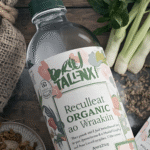

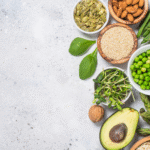
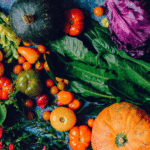
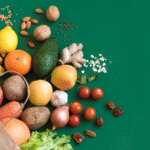


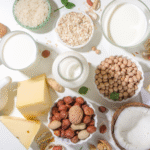

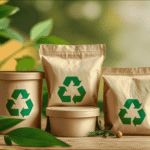
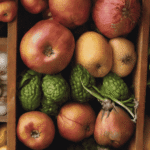
[…] […]
[…] September 11, 2025 […]